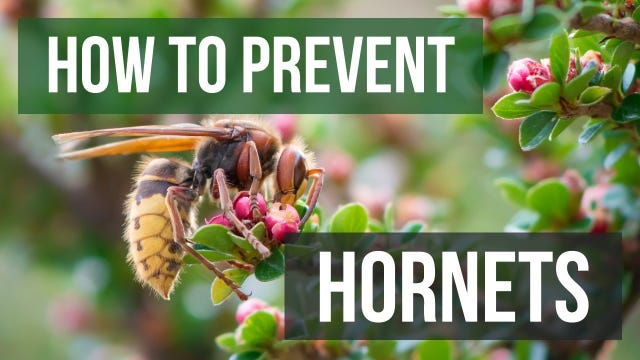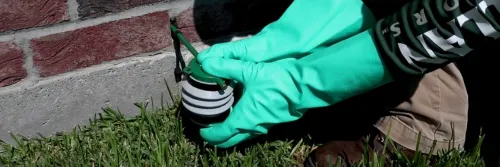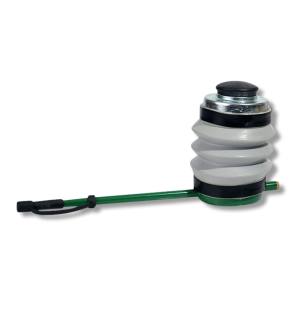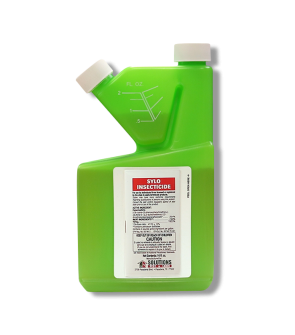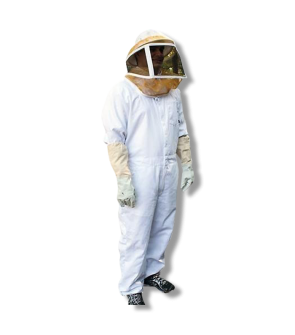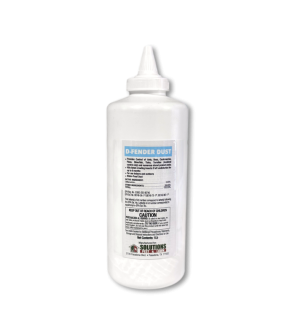Gain access to personalized product screening, the best pricing, rewards, and more!
Most Effective Products
All You Need To Know About Asian Giant "Murder" Hornets
An insect gaining notoriety recently on social media is a large-sized wasp dubbed online as the "murder hornet." The proper name for this wasp is the Asian giant hornet, also referred to as the Japanese Giant Hornet, the largest discovered hornet species in the world.
The Asian giant hornet is native to East Asia and raised some alarms when two were spotted in North America in late 2019. At 2 inches long, it can be startling to see up close with its distinct orange and black markings and long stinger.
While people appear to be worried about getting stung by this insect since it is known to deliver one of the most painful stings in the insect world, the main worry of the Asian Giant hornet is its threat to the honeybee population.
On this page, we will clear the air in regards to the Asian giant hornet and cover how to identify the wasp, what to do if you discover the "murder hornet" on your property, and the steps you should follow to keep hornets, including the Asian giant hornet, away.
Identification

Before proceeding with treatment, you must be certain the wasp species infesting your yard is an Asian giant hornet. Misidentification can lead you to use the wrong pesticides, wasting your time and finances. Listed below are some key traits to know what Asian giant hornets look like:
- Hornets are social wasps of the genus Vespa. This includes Asian giant hornets and the European Hornet, which is much more common in North America, especially the Eastern United States.
- The Asian giant and European hornets are considered "true hornets." The two hornets look extremely similar and are often confused with one another. However, with their relatively new introduction to North America and currently limited spread, Asian giant hornets are unlikely to be spotted outside the Pacific Northwest.
So, if you live in a different region of the U.S. and see a giant hornet in your yard or around your home, it is likely a European Hornet or another wasp, like a cicada killer. Still, it is important to know what the Asian giant hornet looks like so that you can spot the difference between it and other lookalike wasps and hornets.
Asian Giant Hornet VS European Hornet

While the Asian giant hornet and the European hornet are very similar, there are some traits you can look for, such as their size and coloration:
Asian Giant Hornet (left)
- Adult Asian giant hornets are large, growing up to 2 inches long.
- They have a wing span of up to 3 inches.
- They have yellow and dark brown stripes along their abdomens.
- Their thorax will be dark brown in color.
- The entirety of their heads will be a vibrant yellow-orange -- a distinguishing feature.
- They have large mandibles (mouth parts).
European Hornet (right)
- European hornets will grow up to 1.5 inches in length.
- They have dark brown to black and yellow stripes along their abdomen, but thick black bands will give way to thick yellow bands as they move down the abdomen toward the stinger.
- They will have a reddish-brown thorax.
- Their faces will have trace color from their thorax and become a lighter yellow-orange toward the face.
- Their eyes are bigger than an Asian giant hornet's.
Asian giant hornets are the biggest threat to pollinating honeybees, which are crucial to the ecosystem. They target honeybees by entering the hive and decapitating their heads. These hornets can destroy an entire beehive in a matter of hours. Like other hornets, they feed on other proteins, like trash, decaying organic matter, and other insects.
Inspection

You need to be able to identify the Asian giant hornet and other wasps and know where and what to look for.
Where To Inspect
Asian giant hornets prefer to live in forest areas and woods, but they travel far and wide for honeybees and other protein when searching for food. Unlike some other hornets and wasps that build nests in trees or along houses and building eaves, these hornets build nests underground or in low spaces. They typically use rotting tree roots, hollow tree trunks, abandoned rodents, and snake burrows to build their nests.
The European hornet builds papery nests that are typically elevated and away from human activity, such as in hollows in tree bodies. However, they can sometimes be found in attics and crawl spaces.
What To Look For
Look for the large-sized Asian giant hornets, which are large-sized black and orange wasps. If you find one, follow it closely, and they may lead you to where their nest is if it's established close by.
It is important to remember that if you suspect you may be seeing Asian giant hornet activity, do not approach them any further. Due to their recent introduction to the United States, it is recommended that you do not attack or attempt to kill these insects on your own. Instead, contact your state's Department of Agriculture to report your sighting.
Treatment
Since it is not recommended that you control the Asian giant hornet directly, you will want to treat your property instead to prevent wasp and hornet activity. You can take simple steps to ensure that hornets are kept away.
You can try to indirectly ward off the pest from embarking upon your property with broadcast applications of Sylo Insecticide and D-Fender Dust Insecticide.
These can repel hornets from the area and significantly reduce the insect population, so they won't have any pests to prey on. If there is no prey, they won't stick around.
Remember first to read all product labels follow the application instructions on these labels, and stay safe by wearing personal protective equipment.
Step 1: Apply Sylo Insecticide
Sylo Insecticide is a synthetic pyrethroid insecticide containing the active ingredient Cyclomethrin. It serves as a good contact insecticide that effectively kills or repels insects that hornets prey on and prevents hornets from establishing nests on your property.
First, measure the square footage of your lawn to determine how much Sylo you will need. Find this by measuring the treatment areas' length and width in feet and multiplying them together (length X width = square footage).
You will apply Sylo as a 0.1% emulsion. This is easy to do by mixing 0.5 fluid ounces of Sylo with 1 gallon of water, which will typically treat 1,000 square feet. We recommend using a 1-gallon hand pump sprayer to make applications precise and easy.
To mix Sylo, first, fill your sprayer halfway with water. Add 0.5 fl .oz. of Sylo, and then fill the sprayer with water to the 1-gallon line. Close the sprayer and shake to ensure an even emulsion.
Apply the solution as a barrier treatment around your home and other structures. Spray 3 feet up the wall and at least 6 feet out on the ground to create the barrier. Also, treat eaves and common entry points around the home or structure, such as windows, doors, utility openings, weep holes, and other voids.
You can also make localized spot treatments around the yard where another pest activity is seen. Also, apply your solution to non-food-bearing trees since Asian giant hornets enjoy tree sap.
Step 2: Treat Voids with D-Fender Dust Insecticide
D-Fender Dust is a water-resistant deltamethrin dust that can successfully control a wide range of insects that an Asian giant hornet may consider a worthy meal. Apply the dust in holes and voids around the home to discourage hornets from landing and exploring such areas.
It is best to use a handheld pesticide duster to treat these holes and nest areas for precision and accuracy in getting the dust where you need it to go. Add D-Fender Dust to a duster at a rate of 1 oz. per 125 sq. ft. or 0.5 lbs per 1,000 sq. ft. Lightly squeeze the duster to puff dust directly to voids around the property, such as weep holes or cracks and crevices along eaves.
Prevention
You can prevent hornets from establishing themselves on your property by performing common Integrated Pest Management Strategies (IPM) to remove conducive conditions.
- Trim back tree branches and shrubbery to reduce the amount of cover nests can have.
- Pick up yard debris. Ground hornets, like the Asian giant hornet, can use wood or piled debris as nesting sites.
- Address food and water sources outside. Keep trash cans away from the home and close the lid tightly.
- Seal or repair any opening to the home or structure. Cracks and crevices can be sealed with caulk, but damaged screens and weather stripping around doors must be replaced or patched.
- Perform repeat Sylo and D-Fender Dust applications every 90 days for continued control.
Response To Finding An Asian Giant Hornet
Remember, if you happen to find an Asian giant hornet on your property, it is best that you alert your local Department of Agriculture and report the sighting. They are actively trying to keep this pest from establishing in the country and harming the honeybee population, so you should do what you can to assist them.
Key Takeaways
What Are Asian Giant Hornets?
- Asian giant hornets, also popularly known as "murder hornets," are the largest species of Hornet found in the world. Native to Asia, the hornet has recently been spotted in the US.
- Asian giant hornets are a major threat to the honeybee population and are known for their painful, potentially fatal stings.
How to Get Rid of Asian Giant Hornets
- If you spot an Asian giant hornet, call your local Department of Agriculture to report the sighting. Otherwise, you can use Sylo Insecticide and D-Fender Dust to control this pest.
Preventing Asian Giant Hornet Reinfestation
- You can discourage Asian giant hornets from being on your property with preventative treatments of Sylo Insecticide and D-Fender Dust.






